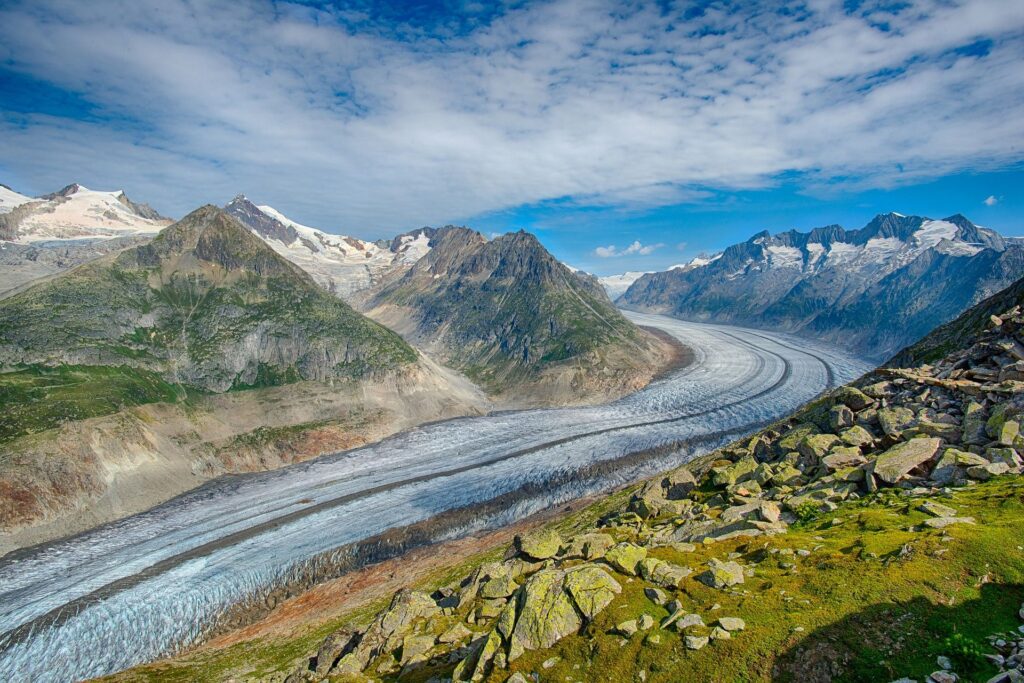Switzerland’s long-term climate strategy
On January 27, the Federal Council resolved all the modalities for the submission of a neutral balance of greenhouse gas emissions by the year 2050…
The Swiss Confederation must present a neutral balance of greenhouse gas emissions by the year 2050. To this end, the Federal Council adopted the net zero emissions target in 2019 and approved the corresponding and necessary “Long-Term Climate Strategy of Switzerland” on January 27, 2021.
It sets out the guidelines for climate policy and establishes targets for the various sectors. In addition, it is in line with the measures and targets set out in the revised CO2 Act, which is essential for achieving the net-zero emissions target.
In fact, this law will enable a 50 percent reduction in greenhouse gases by 2030 and put Switzerland on track to meet its climate target over the next two decades.
In 2019, the Federal Council had already decided that, within 30 years, Switzerland will not have to emit more greenhouse gases than can be absorbed by natural and technical carbon sinks.

1.5 degrees of warming is already a danger
The goal of zero net emissions takes into account the latest scientific findings of the Intergovernmental Panel on Climate Change (IPCC), according to which an average global warming of 1.5 degrees is sufficient to cause serious consequences for humans and biodiversity.
The Swiss Confederation, an alpine country, is particularly affected by climate change, as its temperatures are rising twice as fast as the global average.
Langfristige Klimastrategie der Schweiz
Stratégie climatique à long terme de la Suisse
At the same time as the decision to adopt the net zero emissions target, the Federal Council mandated the Federal Department of the Environment, Transport, Energy and Communications to draw up a climate strategy.
On 27 January 2021, Switzerland thus fulfilled a commitment made in the framework of the Paris Agreement, according to which countries are obliged to submit their long-term climate strategies to the UN Climate Change Secretariat by the end of 2020.
An important basis for the Swiss strategy is the so-called “2050+” energy outlook published by the Swiss Federal Office of Energy in autumn 2020.

Guidelines for a climate-neutral Switzerland by 2050
The long-term climate strategy formulates ten strategic principles that will characterize Swiss climate policy in the coming years.
In addition, it shows the possible developments up to 2050 for the sectors Buildings, Industry, Transport, Agriculture and Food, Financial Market, Aviation and Waste Industry and sets strategic targets for each of these sectors.
The strategy also outlines the magnitude of emissions through 2050 that are assumed to be difficult to prevent, which will need to be offset using carbon capture and storage (CCS) and negative emission technologies (NET).
CCS technologies capture CO2 directly where it is produced, at industrial and waste treatment facilities. NETs, on the other hand, are used for emissions that cannot be filtered directly, such as those from agriculture, by capturing them from the atmosphere and storing them permanently.

Zero net emissions: an attainable goal
The “Long-Term Climate Strategy” shows that Switzerland can reduce its greenhouse gas emissions in the transport, buildings and industry sectors by almost 90 percent by 2050.
The Buildings and Transport sectors can reduce emissions to zero by 2050, and emissions from energy consumption in industry can also be prevented completely in practice.
In the Aviation sector, sustainable renewable fuels and new propulsion technologies offer potential for reducing emissions.
In the Agriculture and Food sector, emissions can be reduced by at least 40 percent compared to 1990.
In 2050, the remaining GHG emissions generated by Industry, Waste-to-energy and Agriculture will be about 12 million tons of CO2 equivalent. They can be offset through the use of CCS and NET.
As an innovative and financially strong country with nearly CO2-free domestic power generation, the Swiss Confederation is well positioned to achieve the net-zero emissions target by 2050.

Climate protection will cost less than change
The social and economic costs of uncontrolled climate change far outweigh the costs of climate protection measures. For the country, the goal of zero net emissions is therefore also of great economic interest.
With the abandonment of fossil fuels such as oil, gas, petrol and diesel, Switzerland also reduces its dependence on foreign countries.
Money, which currently ends up elsewhere, will in future be invested in the Swiss economy, benefiting domestic trade.
Reducing CO2 by fifty percent by 2030
The long-term climate strategy is based on the revision of the CO2 law and related targets.
The carbon legislation passed by Parliament in the fall 2020 session is a key prerequisite to achieving the long-term climate goal. It is scheduled to enter into force in 2022.
The revision will enable the Swiss Confederation to reduce its greenhouse gas emissions by 50 percent by 2030 and put it on track to meet its net zero emissions target by 2050.
Because the law is subject to an optional referendum, citizens will be asked to vote to cast their ballots.







